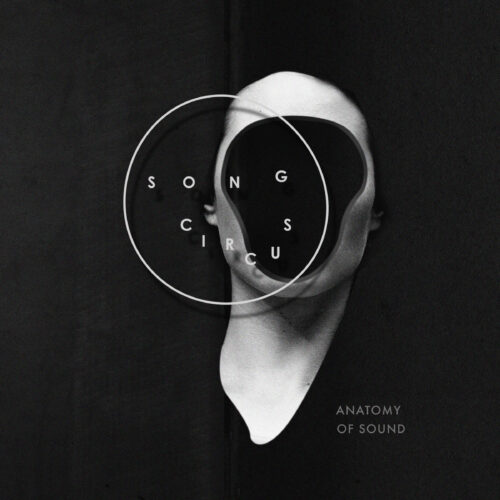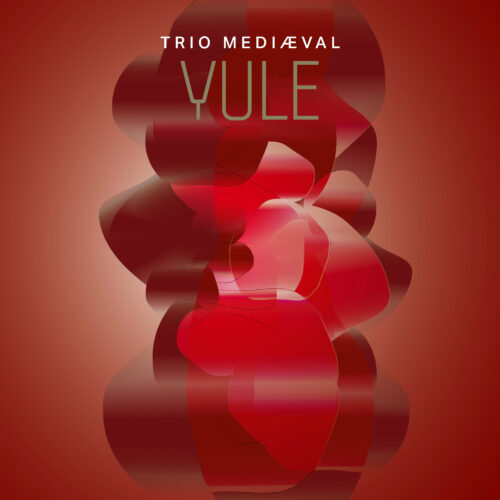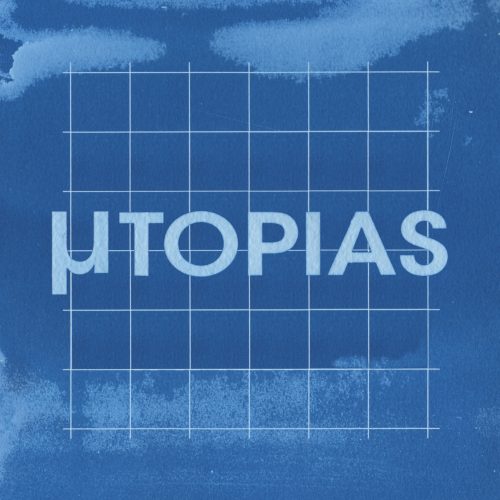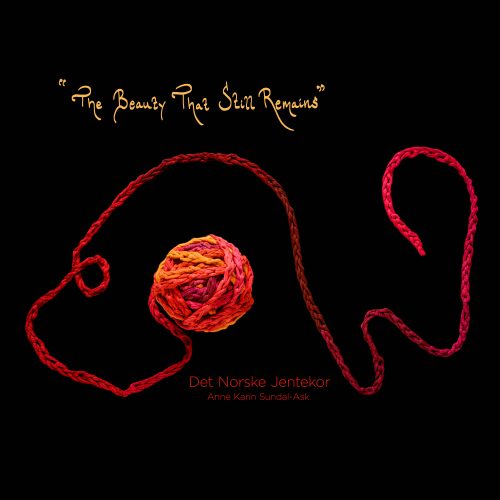Through minutiae explorations into the very microlevels of sound anatomy, through vocal investigations into, as well as the activation of, spatial premises and through the discovery of timbral qualities of objects, Song Circus masters an unusual audial vocabulary that expands the idea of what music can be.
This is an avante-garde album featuring Song Circus, an a capella vocal sextet from Norway. The works they are performing on the album include Landscape with Figures, which was developed with its composer, Ruben Sverre Gjertsen, over a 4 year period and Ole-Henrik Moe’s Persefone.
The human voice is a central part of the instrumental palette of this project and much of the music is the result of the joint efforts of the ensemble and the composer. Landscapes with Figures is partially open in its form; the music is tremendously detailed and intricately notated and requires considerable musical and vocal technique and virtuosity. The composition stretches the limits of tonal flexibility and microtonal precision. Landscape with Figures IIa is composed for performance with eight or sixteen sound channels. As part of the process, Gjertsen studied the academic work of Wishart and Ferneyhoug, and their systems of notation and compositions.
Ole-Henrik Moe’s Persefone is an acoustic piece written for five female voices and wine glasses. It is a textural study of vocal sound, dynamics and microtonality. Moe took inspiration from Morton Feldman when he wrote Persefone and, in the first part, he stretches silence and slowness so far that any sense of a horizontal timeline dissolves into a music of state.
Song Circus
Stine Janvin Motland
Maria Norseth Garli
Liv Runesdatter
Anita Kaasbøll
Eva Bjerga Haugen
Rønnaug Bakke
Artistic Director: Liv Runesdatter
Batonist: Jonas Skartveit Rogne
Electronics: Ruben Sverre Gjertsen
Batonist, Persefone: Carl Anders Nilsen
Tracklist
Please note that the below previews are loaded as 44.1 kHz / 16 bit.Total time: 00:56:53
Additional information
| Label | |
|---|---|
| SKU | 2L117 |
| Qualities | DSD 256 fs, DSD 128 fs, DSD 64 fs, DXD 24 Bit, FLAC 192 kHz, FLAC 96 kHz |
| Channels | 2ch Stereo, Auro3D, 5 Channel Surround Sound, 2ch Stereo & 5ch Surround |
| Artists | Carl Anders Nilsen, Jonas Skartveit Rogne, Liv Runesdatter, Ruben Sverre Gjertsen, Song Circus |
| Composers | |
| Genres | |
| Editing Software | Pyramix |
| Recording Type & Bit Rate | DXD |
| Recording Location | Uranienborg Church, Norway, April 2015 |
| Recording Engineer | Beatrice Johannessen, Morten Lindberg |
| Producer | Morten Lindberg |
| Microphones | DPA |
| Mastering Engineer | Morten Lindberg |
| Digital Converters | Horus, Merging Technologies |
| Original Recording Format | |
| Instruments | |
| Release Date | March 20, 2019 |
Press reviews
The Classic CD Blog
Song Circus presents a fascinating soundscape with composers Ruben Sverre Gjertsen and Ole-Henrik Moe. The music – or the sound-creating – is both difficult and easy to listen to – it depends entirely on which mode the listener is in.
In other words, this is music that one does not put on to have as a background for a cup of coffee. Well, maybe one can do that too, but this world of sounds requires some attention by the listener. And it’s easy to justify many rounds of listening rounds. in fact this recording deserves it.
There are two very different works presented here. Landscape with figures by Ruben Sverre Gjertsen is a universe where the composer uses both electronics and the human voice. The music is, according to the album booklet, carefully noted and the composer has used a number of techniques that require great insight into song, and requires an incredible amount of practitioners. The result is also very good, and you are never really done with this three-quarter-hour-long work.
Ole-Henrik Moe is the album’s other composer. He has created an acoustic vocal work, “Persefone”, inspired by Morton Feldman. Like Gjertsen, Moe also uses microtonality in his composition, which in many ways helps to expand the voice’s flexibility. The first part of the work is in many ways ingenious. Here we talk about listening to the music’s slow being.
Song Circus is a vocal group that really impresses with this album. They offer voice control and virtuosity that is great. In addition, the magic of the sound gurus at the 2L record label also come into their own.
The Sound Projector
The Norwegian Ensemble Song Circus are a seven-piece of vocalists, led by their artistic director Liv Runesdatter. Their Anatomy Of Sound project involves working with a number of modern composers…they’re trying to get into “the very microlevels of sound anatomy”, as they would say, which involves working away at microtones with their voices, exploring certain acoustic spaces, and the timbral qualities of certain objects.
On the particular release we have before us from 2L, they perform a 12-part suite called Landscape With Figures, composed by Ruben Sverre Gjertsen, a contemporary Norwegian composer. This is a 44-minute version for vocalists with live electronics, a work whose full realization involves a complicated set-up in the performance arena, where the vocalists and other musicians are positioned in the audience, and careful microphone placement is needed along with a large loudspeaker for acousmatic playback. Clearly, this “Landscape” is very much about “spatial awareness” in a big way, which may be one reason why it appeals to the members of Song Circus. This may also account for why the record has been released in 5.0 surround-sound playback for those who have the right set-up at home (I don’t, sadly), and permits a truly immersive experience. Even so, the sound in Stereo is pristine and sharp to an extremely high degree. Gjertsen has studied the work Trevor Wishart and Brian Ferneyhough, and absorbed their ideas about “systems of notation and composition”.
Buried somewhere at the heart of these whispering voices and atonal vocal acrobatics, there may be some textual material derived from the work of James Joyce. It’s hard to make it out though, and it may also be mixed up with other texts from Demian Vitanza, the Norwegian novelist. While there’s a nice set of anagrams using the words “Finnegans Wake” printed in the booklet, I’m not sure if this is anything more than an addendum. James Joyce’s words and ideas buy Kamagra online with PayPal have been used in avant-garde music for some time now, most famously perhaps by Luciano Berio for his Ommagio A Joyce, composed in the late 1950s, and there’s also John Cage’s Roaratorio from 1979. I’d like to say Landscape With Figures is a worthy addition to the canon, but it doesn’t really succeed when measured up against either of those two predecessors or against the work of Joyce itself. However, representing Joyce may not be the central aim of Gjertsen, and the cumulative effect of these mysterious fragmented voice murmurs and splintered electronic sound is quite pleasing. However, it also feels oddly old-fashioned; this could easily have been released in the mid-1960s on the Music Of Our Time series.
The second work on the disc is Persefone, composed by Ole-Henrik Moe, another Norwegian modernist who is also a classically trained violinist. This work calls for five female voices, who also lay “an orchestra of wine glasses” – the so-called “glass harmonica” that can produce pleasing high-pitched continual sounds. The Persephone of classical mythology was, among other things, the queen of the Underworld – a notion that is most likely to have preoccupied the mind of Moe when he created this slow micro-tonal work. Landscape With Figures sounds positively bustling with activity compared with this largely static set of haunting, abstract murmurs and howls. The voice of Persephone is a many-layered beast, like that of a thousand owls and sad lonely wolves.
Throughout both pieces, Song Circus perform flawlessly. In fact, their performances are almost inhuman in their clinical perfection, and if we add the super-human clarity of these recordings and the very alien, abstract nature of the music, I sometimes wonder what there is left for us to enjoy. Somehow there is a certain pleasure to be found in the coldness of this work, and the remorseless way the music is executed, which may not be anything like what Liv Runesdatter and her crew intend. I think the faceless woman on the front cover is very telling, a visual index of the near-anonymous music inside.
The Vinyl Anachronist
This collection of experimental pieces for five voices and “electronics” is definitely not in the wheelhouse of your average audiophile. If you can power through your preconceptions about songs and melodies you might find that Song Circus will evoke feelings and emotions that are as rewarding as they are unsettling.
What you’ll notice first is the presence of five female voices making random sounds that dance around our definition of singing. Noises, pops, whoops and even sirens abound in this open, airy soundscape, defining spaces and daring you to hear ever closer. Then you’ll notice the low rumblings in the distance, drone variations and sudden squawks that might make you jump at times–especially if you’re tempted to lean forward to catch all of the tiny little details.
The overall impression is sort of a mix between ambient, Bjork and “Revolution No.9,” despite the fact that these sounds are all captured organically and naturally by Morten Lindberg’s microphones. You might be tempted to think that so much of Song Circus is a studio creation, but you’d be missing the point.
While the first part of the album, a 12-part suite titled “Landscape and Figures,” does unite the five improvised female voices with Ruben Sverra Gjertsen’s sounds, attention must be paid to how those sounds interact with the singers. This is, to a certain extent, reminiscent of the idea that an electric guitar is actually an acoustic instrument since the tonal qualities are dependent on how the guitar amp interacts with the room.
Once you get past that distinction, the second piece makes more sense. “Persepone,” Ole-Henrik Moe’s piece for five voices and wine glasses, is a purely acoustic exercise that focuses on “vocal sound, dynamics, and microtonality.” It’s purer and more aesthetically soothing than “Landscapes and Figures,” and yet it gives you more context to enjoy the album as a whole.
So no, you will not be humming these pieces to yourself after listening in your car on the way to work. This is brain music, to put it succinctly, something to help you define your own expectations when it comes to your musical sensibilities. Song Circus will either challenge you and expand your horizons, or it will make you head for the exits. But I can’t think of a more informative recording in my entire music collection. If you patiently listen to Song Circus in its entirety, you’ll emerge from the experience knowing more about your sound system and how it interacts with your listening room. You’ll also know more about your brain, and how it interacts with new information.
Only logged in customers who have purchased this product may leave a review.






Reviews
There are no reviews yet.